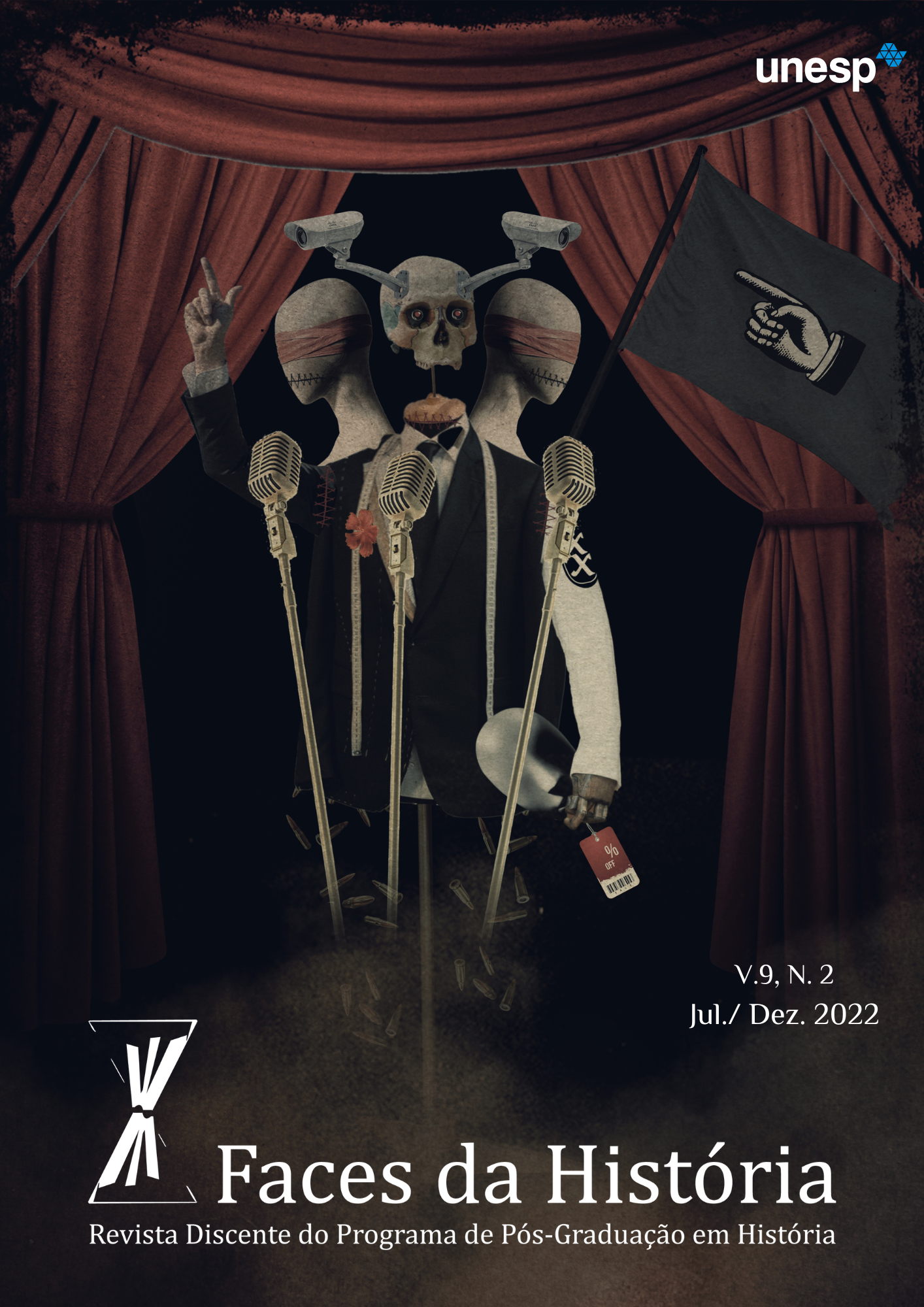The historic movie and the construction of the nationallity in The Alamo, by John Wayne
Keywords:
História do Estados UnidosAbstract
In cinema, history has an inexhaustible source for its films, representing characters and events. Among these events, one of the ones that most caught the attention of Hollywood was the Battle of the Alamo, fought in March 1836 between Texan settlers and the Mexican government. With a vast production over almost a century, the conflict served as inspiration for several directors, among them John Wayne, always remembered for his performances in films of the western genre. Released in 1960, The Alamo was his first experience as a director and the choice on this theme was not fortuitous. The myth built around this conflict has all the elements that Wayne thought constituted America: the fight against a tyrannical government and the unconditional defense of freedom. This article aims to analyze the film The Alamo and the elements present in it that connect with the American nationality.
References
CRISP, James. Slething the Alamo: Davy Crockett's last stand and others myteries of the Texas Revolution. Nova Iorque: Oxford University Press, 2005.
EYMAN, Scott. John Wayne: Life and Legend. EUA: Simon & Schuster, 2014
FERRO, Marc. Cinema e História. Rio de Janeiro: Paz e Terra, 1992.
FOHLEN, Claude. A fronteira: uma explicação da História Americana? in. ______. América Anglo-Saxônica de 1815 à Atualidade. São Paulo: Pioneira/Edusp, 1981. p. 281-301.
FLORES, Richard. Remembering The Alamo: Memory, modernity and master symbol. EUA: University of Texas Press, 2002.
GIROTTO, Breno. A vitória dos Vencidos: Política e identidade nacional norte-americana no filme O Álamo, de John Wayne. Disponível em: https://repositorio.unesp.br/handle/11449/181854
JOHANNSEN, Robert. Introduction. In. HAYNES, Sam; MORRIS, Christopher [ed]. Manifest Destiny and Empire: American Antebellum Expansion. EUA: Texas A & M University Press, 1997. p. 3-20.
JUNQUEIRA, Mary Anne. Estados Unidos: Estado Nacional e Narrativa da Nação (1776-1900). São Paulo: Edusp, 2018.
MORETTIN, Eduardo. O cinema como fonte histórica na obra de Marc Ferro. História: Questões & Debates, Curitiba, n. 38, p. 11-42, 2003. Disponível em: https://revistas.ufpr.br/historia/article/view/2713
NAPOLITANO, Marcos. Fontes audiovisuais: a história depois do papel. In. PINSKY, Carla Bassanezi (org.). Fontes Históricas. São Paulo: Contexto, 2005. p. 235-289
NIGRA, Fabio. El cine histórico de Hollywood como acción hegemónica. Anos 90, Porto Alegre, v. 22, n. 42, p. 375-405, 2015. Disponível em: https://seer.ufrgs.br/anos90/article/download/51883/36154
ROBERTS, Randy; OLSON, James. A Line in the Sand: The Alamo in Blood and Memory.
Nova Iorque: The Free Pass, 2001.
____________. John Wayne: American. New York: The Free Press, 1995.
TUCKER, Phillip. Exodus from the Alamo: The Anatomy of the Last Stand Myth. Havertown & Newburry: Casemate Publishers, 2010.
Published
How to Cite
Issue
Section
License
Autores que publicam na Revista Faces da História concordam com a cessão dos direitos autorais dos manuscritos, processo simultaneamente licenciado sob a Licença Creative Commons Attribution (CC-BY-NC), que permite o compartilhamento do trabalho com reconhecimento da autoria e publicação inicial nesta revista. Dessa forma, a Revista Faces da História pode difundir os artigos e trabalhos publicados, em formatos físicos e/ou eletrônicos, incluindo Internet.




